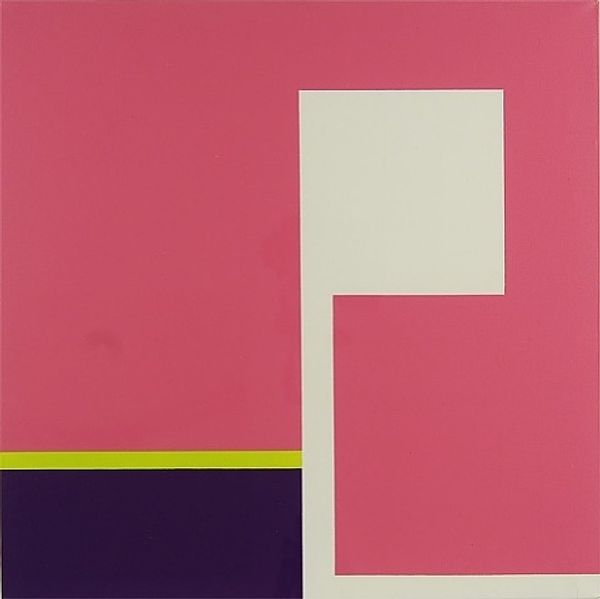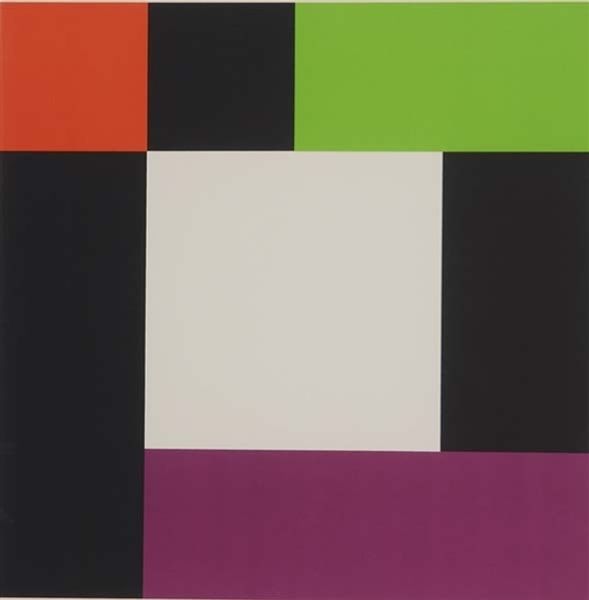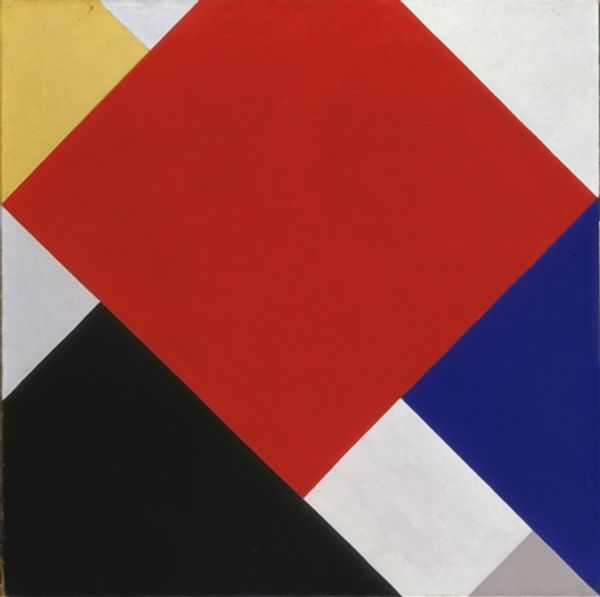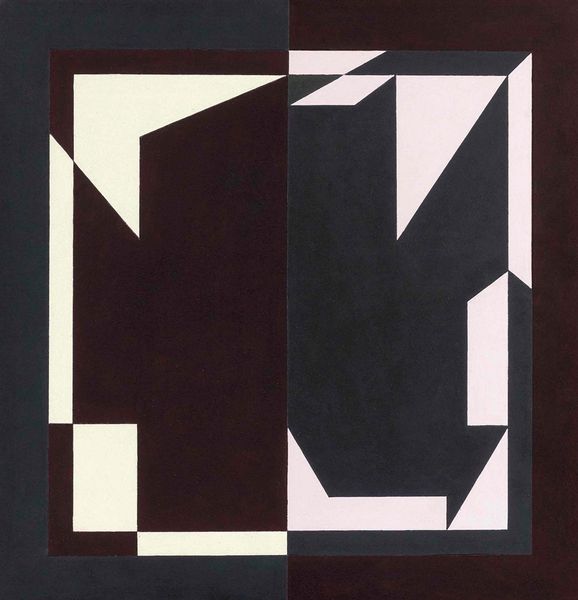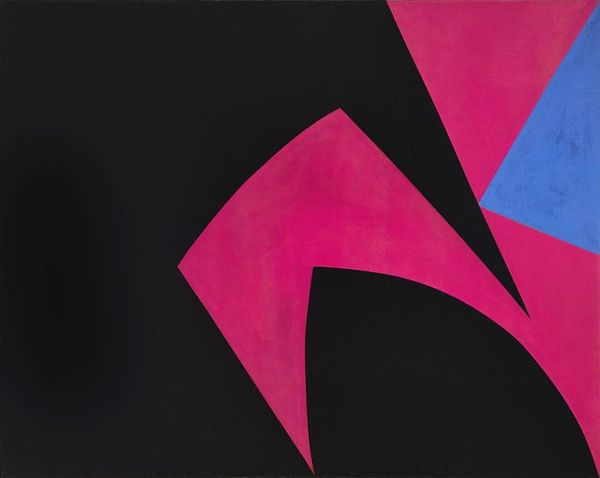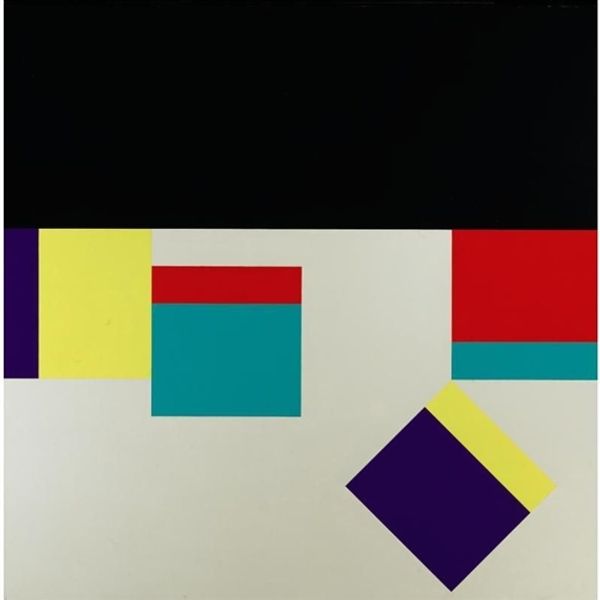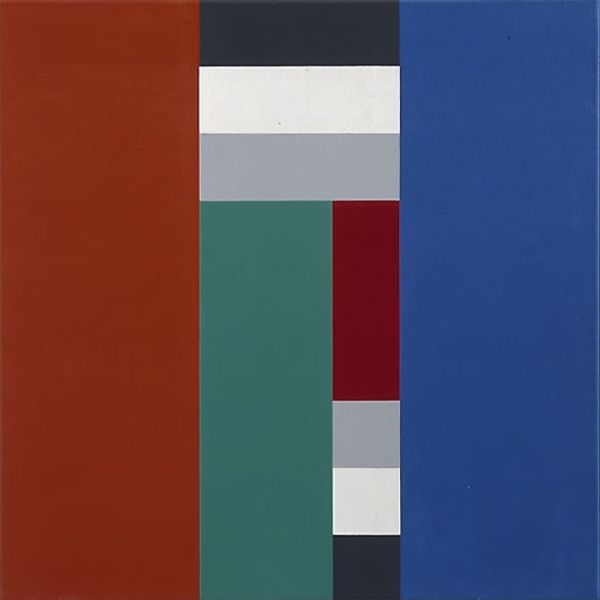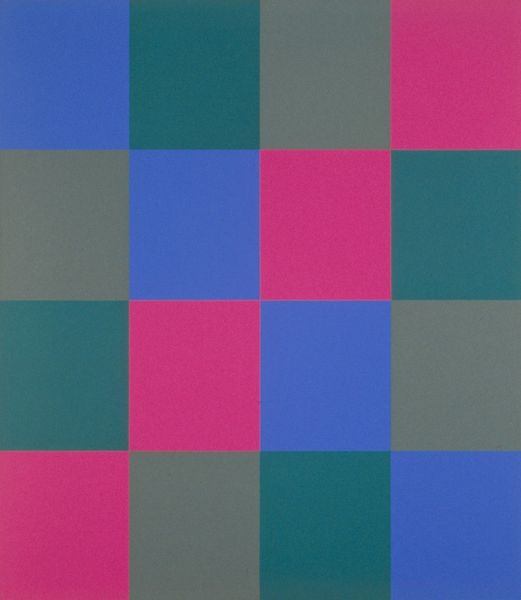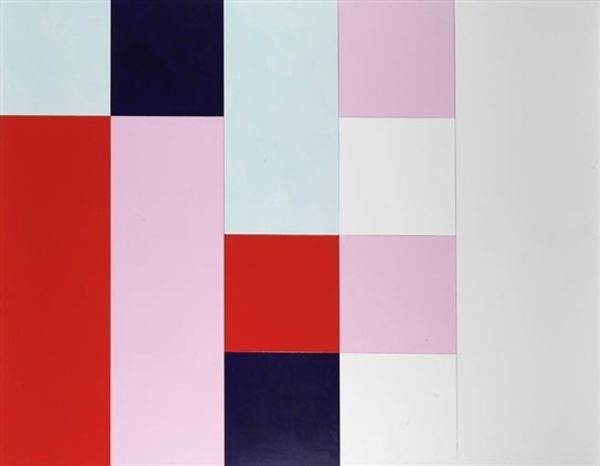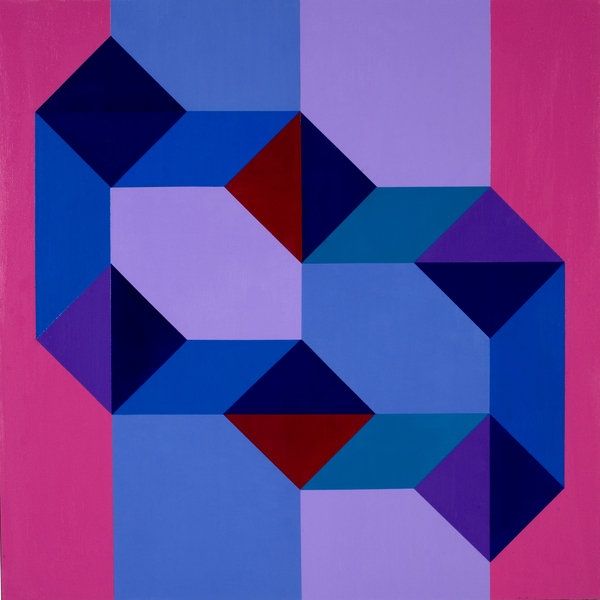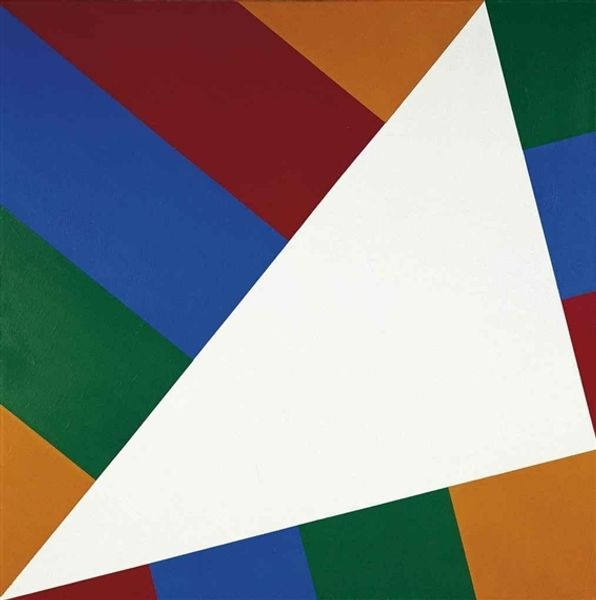
acrylic-paint
#
op-art
#
minimalism
#
op art
#
pop art
#
acrylic-paint
#
geometric
#
abstraction
#
hard-edge-painting
Dimensions: overall: 114.3 × 114.3 cm (45 × 45 in.) framed: 116.84 × 116.84 cm (46 × 46 in.)
Copyright: National Gallery of Art: CC0 1.0
Editor: So, here we have Frederick Hammersley’s "Power Steering, #17," created in 1978 with acrylic paint. The geometric shapes and bold colors give it a real sense of energy. How would you interpret this work, looking at it from an art historical and cultural perspective? Curator: Considering the late 70s, a period grappling with shifting power structures both socially and politically, Hammersley's hard-edge abstraction offers an interesting commentary. What does the title, "Power Steering," evoke for you? Does it hint at control, or perhaps the illusion of control within a complex system? Editor: I hadn’t really considered that. I was focusing more on the visual balance, or imbalance, between the shapes. So, you think the title is a key to understanding the work's social context? Curator: Precisely! And think about the colours—a stark black, earthy brown, cool lilac, and pure white. These aren't arbitrary choices. How might they relate to conversations around race and identity that were gaining momentum at the time? Editor: That makes me wonder if the color blocking represents different social groups or ideologies. And maybe the sharp lines are meant to show division rather than harmony? Curator: Absolutely! The apparent simplicity is deceptive. Hammersley’s work encourages us to examine the underlying power dynamics at play in seemingly simple compositions. Editor: I definitely see that now. I appreciate how you linked the visual elements to the broader cultural and political context of the time. Curator: Art like this is not just about aesthetics; it's a reflection of and a contributor to the critical dialogues shaping our world.
Comments
No comments
Be the first to comment and join the conversation on the ultimate creative platform.

